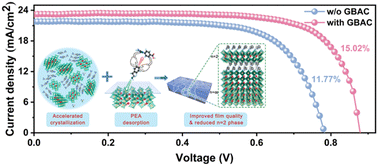Roadcheck effects persist as truckload market still tightening
Tender rejections are already near last year’s July Fourth peak. The post Roadcheck effects persist as truckload market still tightening appeared first on FreightWaves.

The Commercial Vehicle Safety Alliance’s (CVSA) annual International Roadcheck inspection blitz has come and gone, but its effects on the trucking industry are proving more persistent than in recent years, revealing a market that may be more vulnerable to disruption than previously thought.
The three-day enforcement initiative, which took place last Tuesday through Thursday, saw inspectors across North America conducting comprehensive examinations of both driver credentials and vehicle conditions. While Roadcheck week traditionally causes temporary market tightening as drivers opt to sideline their trucks, this year’s aftermath suggests deeper structural issues in the freight market.
During the inspection period itself, truckload capacity tightened noticeably, with the Outbound Tender Rejection Index (OTRI) increasing by over half a percentage point in just a few days. National tender rejection rates jumped from 5.21% on May 11 to 6.48% by Sunday. Simultaneously, the National Truckload Index (NTI), which tracks aggregated dry van spot rates, rose approximately 4.5% – from $2.19 a mile to $2.29 a mile – over the same period.

What makes this year’s Roadcheck response particularly notable is that these elevated rejection rates have persisted beyond the inspection period itself. The sustained tightening indicates this is potentially the most vulnerable the truckload market has been in years, despite broader economic concerns.
The historical context highlights just how unusual this year’s reaction has been. In 2021, Roadcheck had minimal market impact as spot rates were already climbing 1%-2% weekly, creating strong financial incentives for drivers to remain operational despite inspection risks. The 2022 event was similarly muted, despite a collapsing demand environment, due to the sheer volume of carriers still on the road during that transitional market phase.
Last year marked a more significant response to Roadcheck than previous years, though still relatively marginal and complicated by the Memorial Day holiday. This year’s more dramatic and sustained market reaction suggests a fundamental shift in the balance between supply and demand.
The current market conditions help explain this heightened sensitivity. Spot rates had declined by 8% over the previous three months, reflecting broader stagnation across the economy and freight sector. In this challenging environment, many carriers are operating with minimal financial cushion, simply trying to cover basic operational costs.
A key insight from the SONAR data is that the surge in rejections wasn’t driven by increased demand. The National Outbound Tender Volume Index (OTVI) showed stable tender volumes from shippers to carriers throughout the period, confirming that the tightening stemmed exclusively from the supply side of the equation.
This year also introduced a variable that likely contributed to the market dynamics: the enforcement of an existing rule requiring drivers to speak and read English. While it’s unclear if this was a focal point in this year’s inspections, it potentially contributed to an increased number of drivers choosing not to operate, further constraining available capacity.
For freight brokers and carriers, the lingering effects of Roadcheck could signal challenging conditions ahead. If this summer follows typical seasonal patterns, shippers will likely have an increasingly difficult time securing capacity, especially considering that current rejection rates are already approaching last year’s summer peak levels. In 2023, rejections climbed from Roadcheck levels to 6.59% by early July, ahead of the Independence Day holiday.
Looking ahead, while Roadcheck week alone won’t fundamentally alter the difficult conditions facing the industry, its magnified impact this year serves as an important indicator of underlying market fragility. Additional potential disruptions loom on the horizon, including a recent surge in import bookings following the Trump administration’s softening stance on tariffs with China. This could trigger a wave of inbound freight and contribute to a summer uptick in demand.
The transportation industry may be approaching the catalyst it has been anticipating. While the immediate effects of Roadcheck will fade, the combination of evolving trade conditions, potentially low inventory levels and the demonstrated sensitivity to capacity disruptions suggests the market may be at an inflection point.
The post Roadcheck effects persist as truckload market still tightening appeared first on FreightWaves.




















































































































































